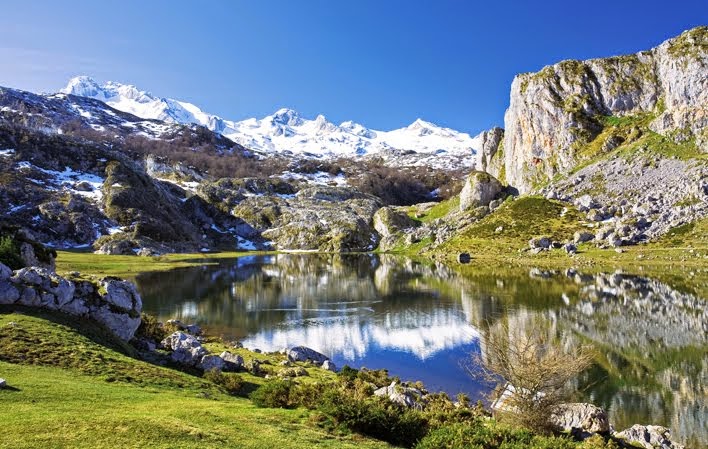The
natural park of Arribes del Duero is located in the west of
the Castile-León Region, in the area where its two provinces
meet: Salamanca and Zamora. The spectacular canyon carved out over
time by the Duero River, the Iberian Peninsula’s longest and deepest
watercourse, dominates the landscape of this area. A stunning setting with
rugged gorges and canyons, occasionally reaching a depth of 500 metres, running
almost one hundred kilometres through the southwest of Zamora and the northwest
of Salamanca provinces, forming a natural border between Spain and Portugal.
Cllick here to see the route we took
Cllick here to see the route we took
Our
journey took us from Madrid on the A6 to Salamanca, beware because after the
Guadarrama tunnel the A6 becomes the AP6 which is a toll road, but in my opinion
it is 9 euros well spent. Then we took the AP51 in direction Avila and from
Avila the A50 to Salamanca.
Salamanca
is well worth a visit if you haven’t already seen it, especially the University
that was founded in 1134 and is the oldest founded university in Spain and the fourth
oldest European university in continuous operations.
Leaving Salamanca behind we took the SA 300 in direction Ledsema which changes to the SA 302, all the time following the flow of the river Tormes
At about km 59 after passing Monleras, on the right there is an exit which is the old road.
this is now used by the locals as a fishing spot, but we had no problem parking up for the night.
Continuing
along the SA 302 until the town of Almendra and turning right down the SA 315
which leads to the enormous dam of the Almendra reservoir. The reservoir behind
the dam covers eighty six square kilometres and contains two and a half billion
cubic metres of water. The dam itself is more than half a kilometre wide and has
a height of two hundred metres and was built by dictator and all round bad guy,
General Franco using slave labour from the captured Republican troops.
Continuing
along the SA 315 until joining the C 527 direction Fermoselle, where we loaded
up with bread and pastries in an award winning local bakery, oh and a couple of
bottles of Ribera del duero wine.
The
road was beginning to look rather boring, so we decided on a whim to head in
direction Trabanca along the SA 316 which turns into the ZA 3016, that’s
because Salamanca is responsible for the SA bit and Zamora is responsible for
the ZA bit, just so nobody gets confused I suppose. Then finally reaching
Pereña de la Ribera, where we were on the lookout for a small church called
“Nuestra señora del Castillo”, which was going to be our second camp. After a
bit of drive up a one lane dusty track we finally arrived at a flat open meadow
with trees forming shady areas, perfect for our needs.
Needless
to say the views here are spectacular, using a small path that heads off to the
right of the hermitage you can reach a large flat rock that has a drop of over
500 metres and reminded me of the spot where the blonde women in the film Last
of the Mohicans, threw herself off so as not to be despoiled by those pesky Indians.
We
saved the best until the last, and in a way that’s the great thing about the
campervan, when you leave a great site nostalgically thinking that the next
stop over is going to be a big let down, you inevitably find something even
better. This was the case for us when we headed off for el Salto de Saucelle.
Windy
mountain roads straight off the Italian job lead us down to a town once populated
by workers at the hydroelectric dam and now populated by 2 men and 0 women, make
of that what you may.
From
the low point it was up once more until we arrived at a village called La
Fregeneda and the “mirador del mafeito” is about 5 kms away along another
little windy untarmaced track.
After
we parked here, we continued down the track on foot and after about an hour,
stopping to pick almonds that were ripening on the trees, we arrived at the
banks of the mighty Duero river. After skinny dipping in the river and opening
my almonds with a stone I had a great feeling of empathy with Palaeolithic man
who wandered these parts about 20,000 years ago.
Luckily, unlike Mr Palaeolithic, I had a campervan where I could sleep and a small stove to heat up the pot
noodle I had waiting for me.









